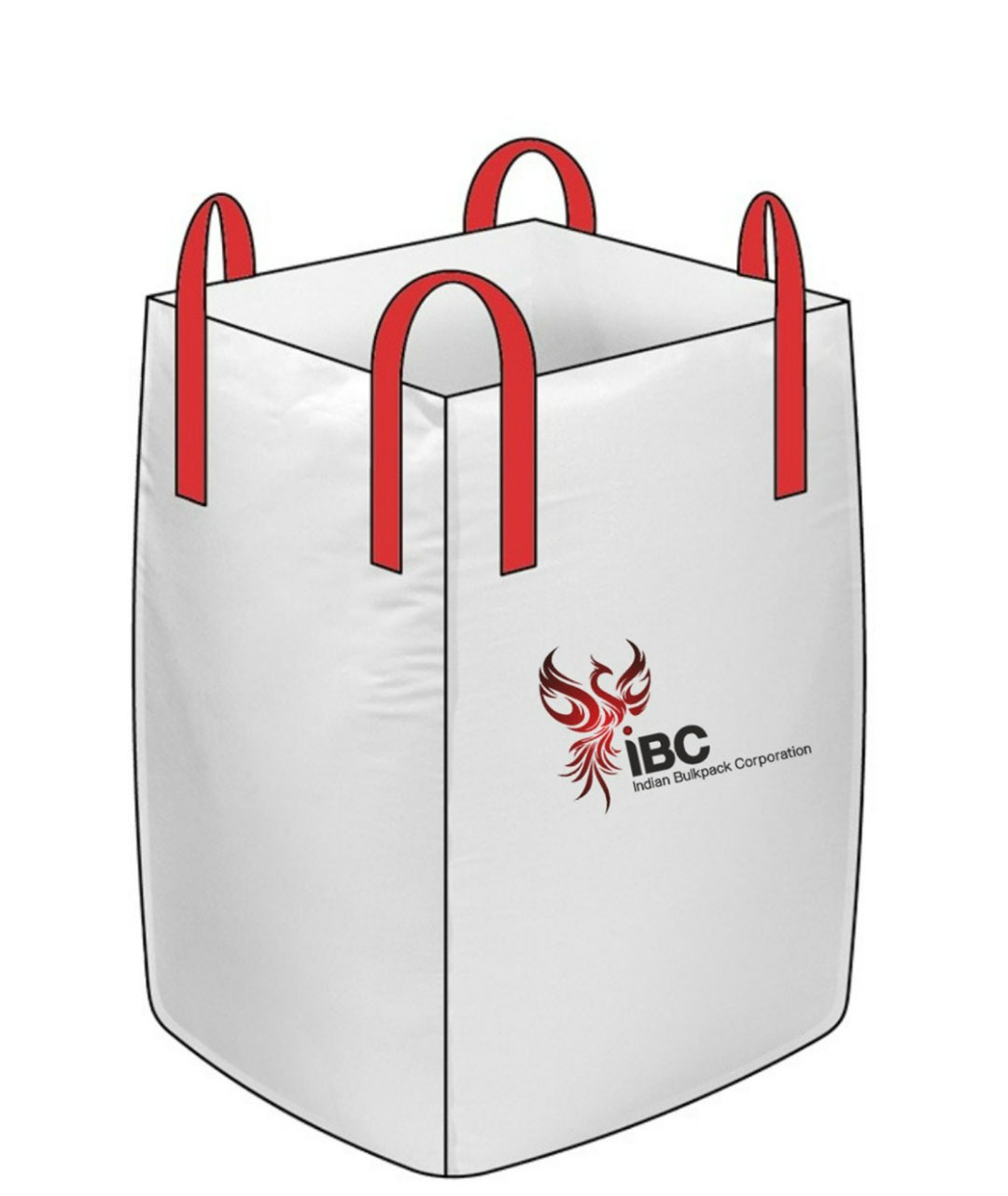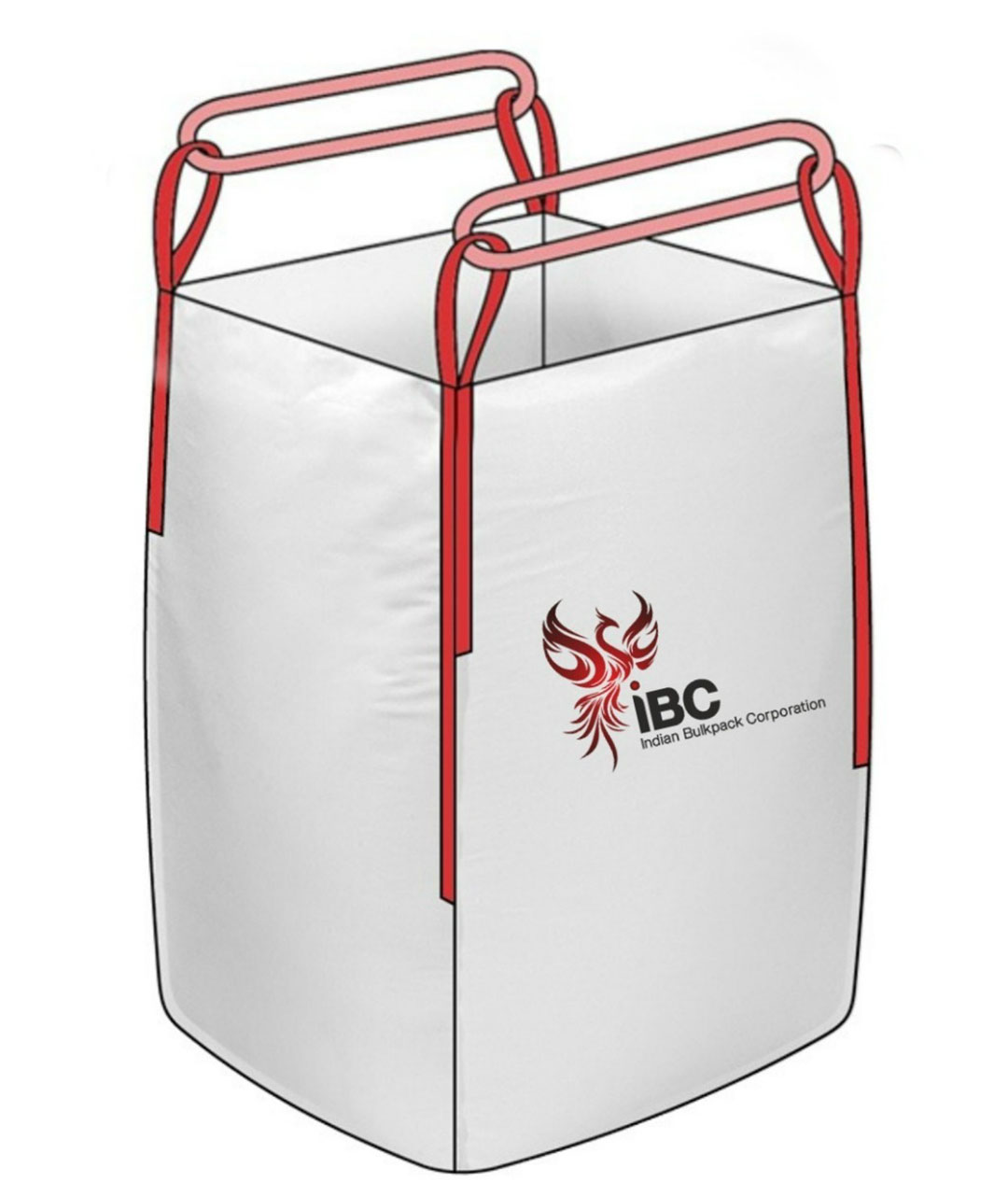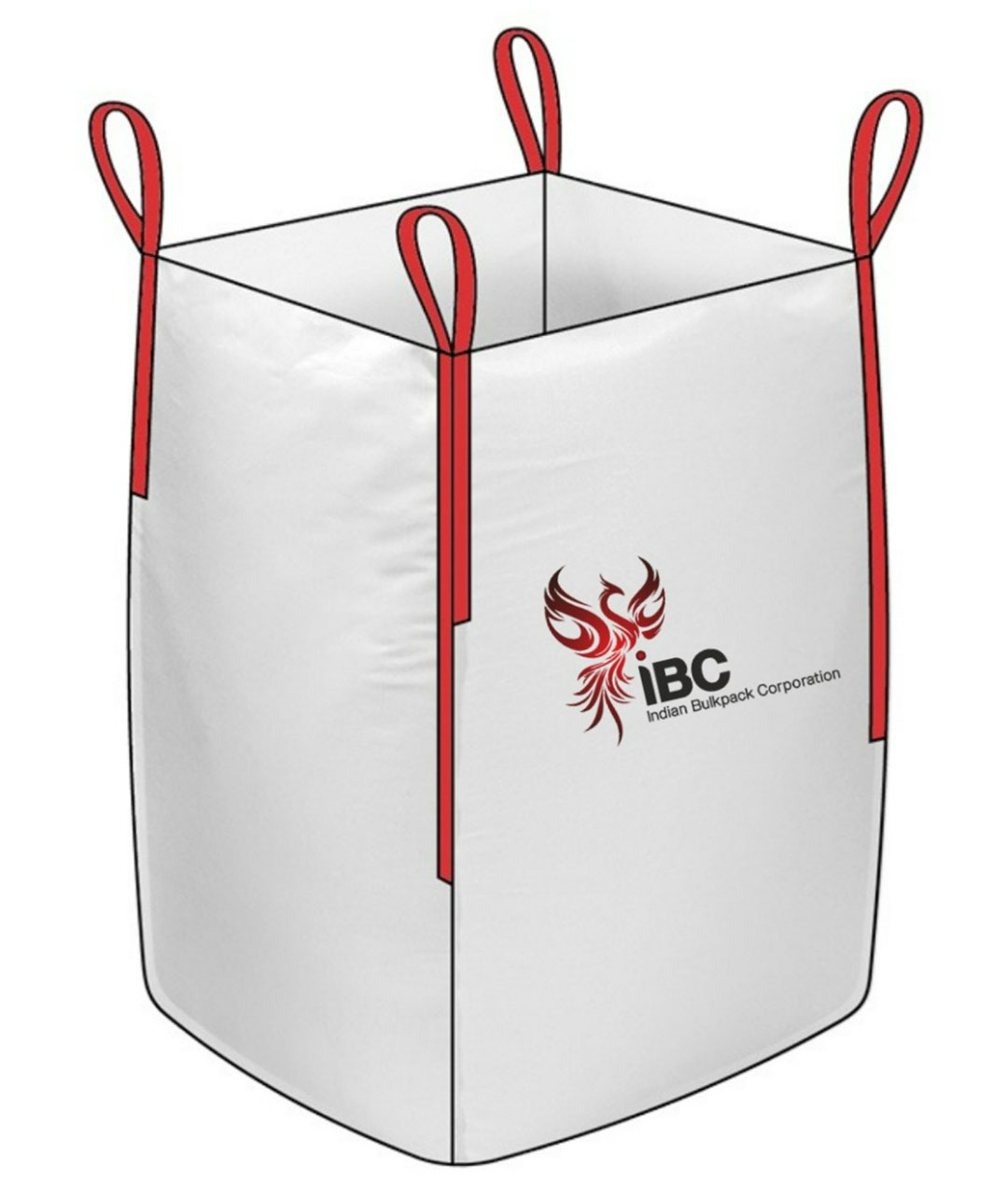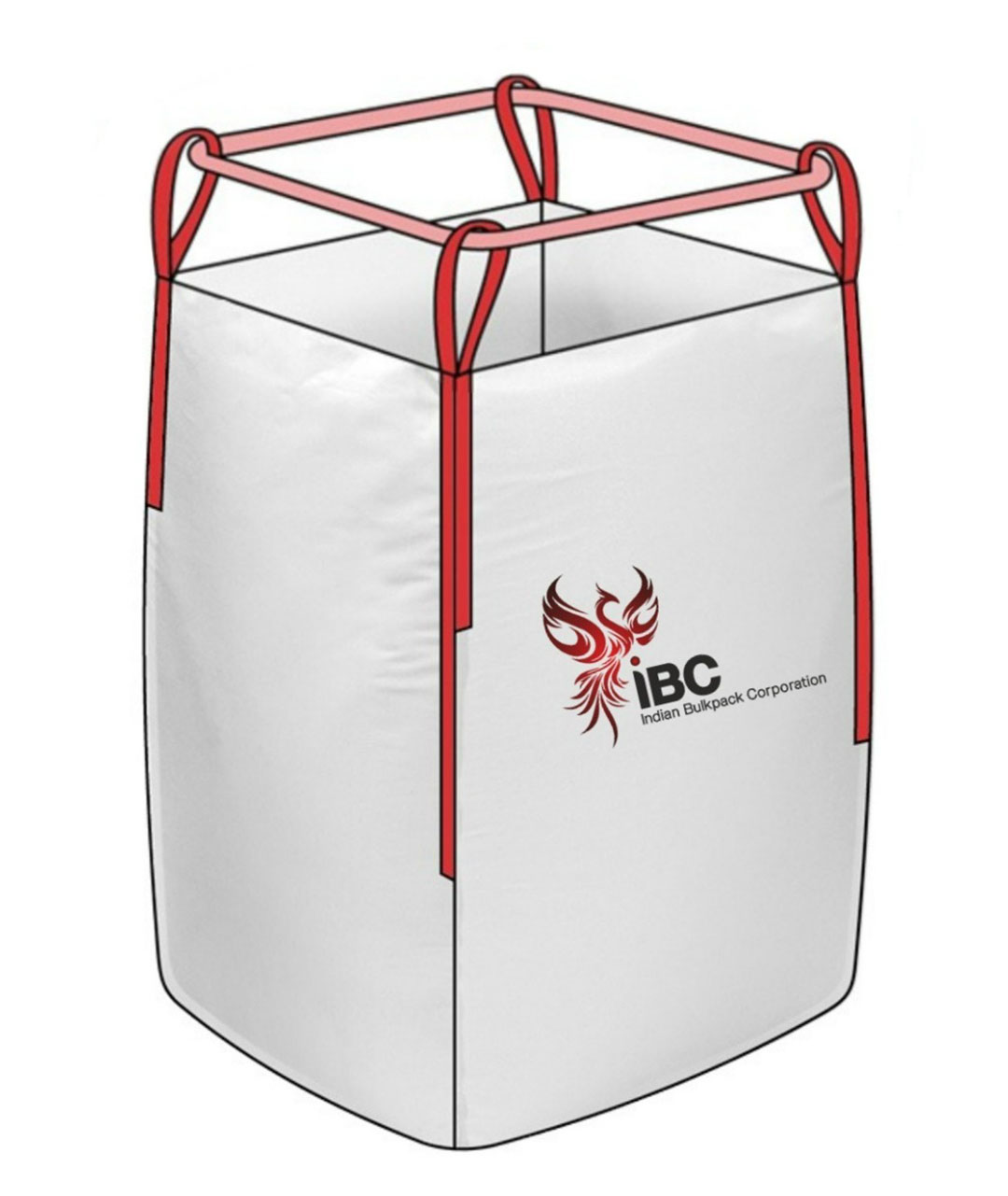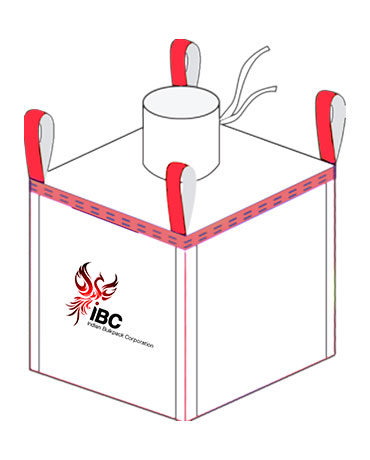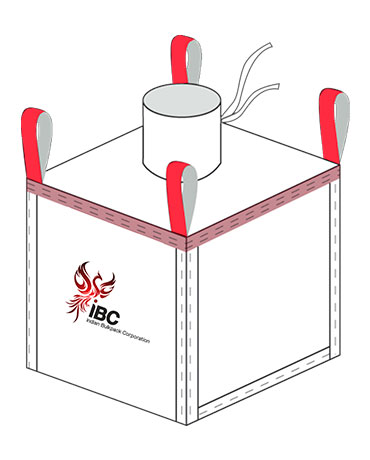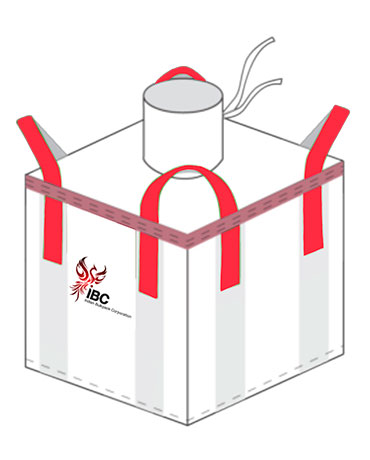FIBC / BIG BAGS / JUMBO BAGS / SUPER SACK
As the name literally suggests, “Flexible Intermediate Bulk Container” are made of Flexible Polypropylene Yarns, and also known with different names in different regions such as Bulk Bags, Jumbo Bags, Super Sacks, Tote Bags etc.
These industrial containers are Technically Designed to the USER’s Requirements, basically driven by “Technical Abilities at Material Filling Site, their Equipment/ Machines to Fill & Handle the bags, which helps storing, transporting and unloading the material at the determined location.
With a labour force difficult to find, costly, and their safety related measures, FIBC provides desired solutions to make operations cost effective, quick and safe.
These are used in several industries such as cement, agricultural, chemical, mining, construction and many more, and along with the technical equipment part, are also customized based on the volume & nature of the material being filled.
Say, if we want to handle the bags with the help of forklift, 4 point/4 loops lifting is recommended. If the bags are to be lifted with a hook/crane we advise One Loop / Single point lifting with help of stevedore loops etc.Click toknow more lifting loop options
Lifting loop options: -
1. 4 panel bag
4-Panel bags are constructed with four individual pieces sewn together to form a square structure. When filled a 4-panel design bag will hold its square share better than a U-panel or a Circular bag. A 4-panel bag with more number of panels, needs more stitching areas, which tends to make it prone to failure compared to other designs, where the load is distributed on the fabric instead of sewing lines.
With the advantage of better stability compared to other designs, these are most appropriate designs for stacking.
Can be used for SWL up to 1800 Kgs and comes in single trip, multi trip and UN versions.
Benefits -:
2. U-Panel bag
U-Panel bags constructed with 3 body panels. One of which runs the full length of the bag forming the bottom and two sides & two additional pieces of fabric sewn into larger pieces that form the sides of the bags. U-panel are an industry standard and the most popular type of construction offering high safe working loads and solid durability.
Benefits -:
- • Body being made through running fabric helps distribute of the load pretty well compared to other designs of FIBC.
- • Less Stress on the bottom of the bag.
- • More load carrying capacity compared to other versions of FIBCs’.
3. Circular bag
Circular Bags, as the word literally suggests, are made with a Circular / Tubular piece of fabric for the body of the bag, which do not have seams. No seams in the bag body, means all the pressure is being handled by the body fabric and after an extent, the entire load bearing is done by the bottom of the bag. The Bottom panel is square shaped only, which when sewn gives the bags a shape similar to a 4-panel bag.
With no seams in the bag body, there are 8 reinforcement bands, which have double warp tapes, making the reinforcement bags denser on the weaving part, which allows weaving of the webbing/loops directly on the bag body.
With different equipment at the facility of the handler of the bags, these are the most suitable design FIBC, when it comes to Cross Corner Loops. However, these can be made with Corner Loops design as well.
Benefits -:
- • With no seams, these are the best design to store fine materials.
- • Cross Corner Lifting with twisted loops, makes handling easy for the operator.
- • For designs equipped with sift proofed seams, these bags help save a lot due to lesser seams in the bags.
- • With BOPP lamination resulting in no fins inside the bag, these are the best versions for industrial / BRC clean bag application.
- • Comes with all types of filling & discharge options.
Drawback -:
- • One of the drawbacks is, there is a size limitation for these bags. With most used machineries, the maximum size weaving that can be done for a tubular fabric is 240Cms, which is effectively a bag size of 120x120
- • This limitation comes because of very less usage for bigger size tubular bags, which does not encourage a manufacturer to install machines that could produce bigger size.
- • For designs equipped with sift proofed seams, these bags help save a lot due to lesser seams in the bags.
- • The similar limitation is for lamination/coated versions of these bags. With the most used machinery, the maximum size of lamination is practically a tubular size of 105x105Cms, which can be stretched to 110x110 by introducing BOPP lamination technique.
4. Baffle bag
The most important feature of an FIBC is storage & transportation. Handling is usually the same in all the available construction of the bags. But storage and transportation are of utmost importance.
A bag regardless of the construction, be it 4-panel, U-panel or circular loses its shape once filled. The material due to gravitational force and nature of material puts force on the bag body resulting in bag bulging through sides, as the bottom rests on the floor.
To overcome this challenge and restrict the bulging of the bags, Baffle bags are the most recommended design.
The Baffles are additional fabric pieces which are sewn along with lengths of the bag body. These are commonly done in 2 designs.
- • DIAGONAL - The baffles fabric is sewn diagonally between 2 adjacent panels. The point of sewing is basically 1/3rd of the total size of the panels. For example, footprints of a bag are 105x105 CMS, so the baffle fabric is sewn 35Cms from the corner of the bag in between 2 adjacent panels.
- • PLUS/SQUARE - These are the designs which divide the panels into half and the sewing in this case is done on 2 opposite panels, making a “+” sign if seen from top view.
There are oval shaped/half-moon shaped punches, which allows free flow of the material, and the baffle sewing provides a holding effect on the panels, which helps restricting bulging and keeping the shape to square / rectangular.
Further Designs
- • 4-panel Baffle
- • U-panel Baffle
- • Circular Baffle
- • Net Baffle
- • Tie Baffle
Benefits -:
- • Controlling shape of the bag, and giving an additional space advantage up to 30% of area covered for a single FIBC.
- • Better Stacking.
- • During container filling, once a bag is filled and stacked on pallets, there is no point of holding the bags, one can only lift them when they are on pallets. Baffle bag with the feature of restricting the bulging ensures the bag doesn’t tough the other bag, which allows easy handling.
- • Heavy advantage on the logistics cost due to reduced bulging allowing additional material filling. Reducing the cost up to 30-35% just because of the construction.
- • Available with all types of filling and discharge facilities.
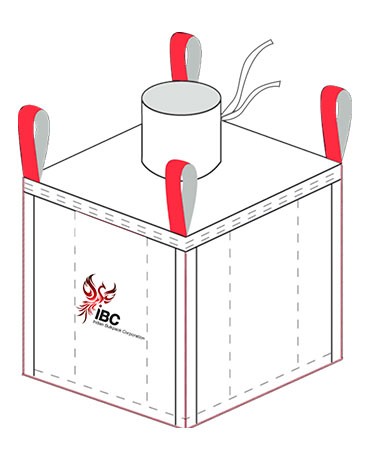
5. Tunnel loop bag
Tunnel Loop design is common for FIBC where the load bearing is more compared to the size of the bag proportionally. A smaller bag tends to lift less of the material due to the restriction in the strength of the webbing and other inputs
In case of tunnel lift design, the lifting facility made by extension of the body fabric allows greater strength and load bearing capacity, making it one of the most cost-effective options for packaging.
Allows time & cost saving as filling, handling and discharge can be done while the bags hang on a forklift.
Comes in all versions of filling/discharge/coated/printed/with liner/dust proofing etc.
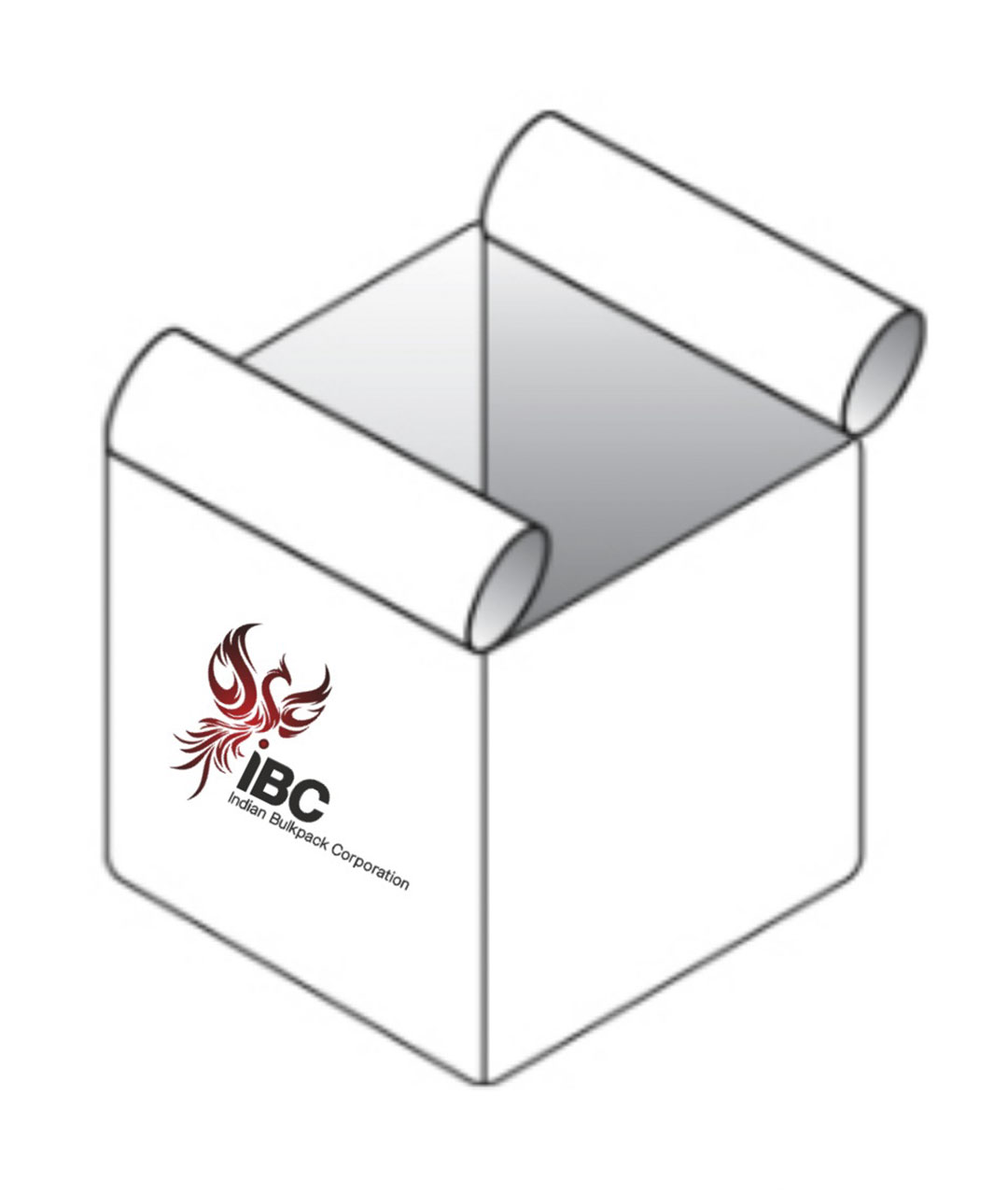
6. Platen bag
Platen bags are big size PP woven packaging solutions replacing traditional metal cans. These have proportionally better strength VS weight ratio. These are bigger than traditional FIBC and are commonly used to manage large scale asbestos plates.
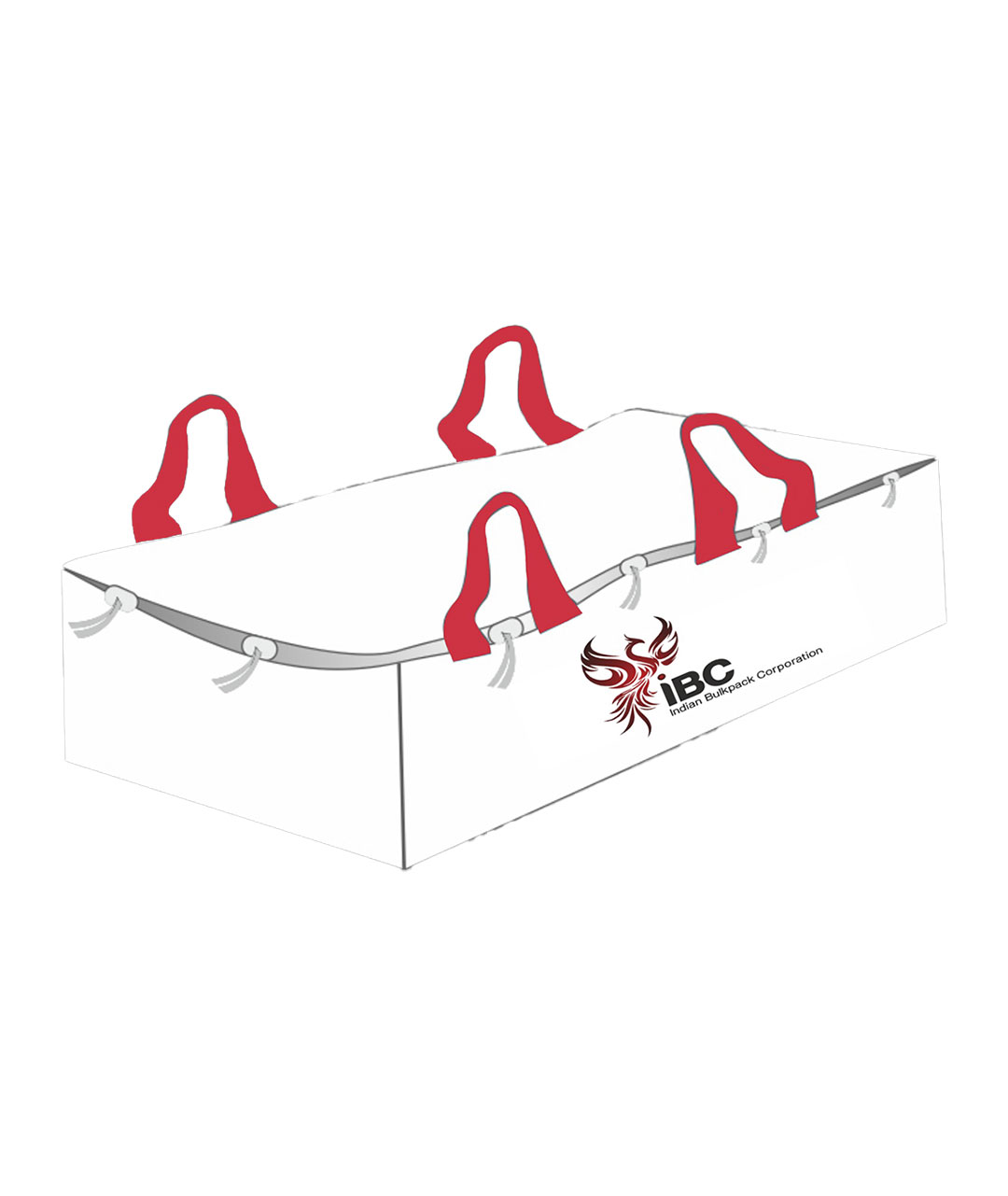
7. Single loop / Double loop bag
One Loop / Two Loop bags are FIBC which offer self-supporting lifting options with the help of extended body fabric. The Body fabric is made from tubular fabric, which is eventually slit down as per the requirement of lifting height and loops are made from the same fabric, which are enclosed with PP fabric called as sleeves which comes in different colours helping in identification
It gives immense strength during handling and are also cost-effective options. Mostly used in chemicals, fertilizers, cement and construction industry. With automatic filling plants in use nowadays, these bags in roll forms are most in demand FIBC which are best for quick filling stations.
These also come with different filling & discharge options, and also with generic corner/cross corner loops as well along with standard one/two loop design. Also, used with Suspended Liner options.
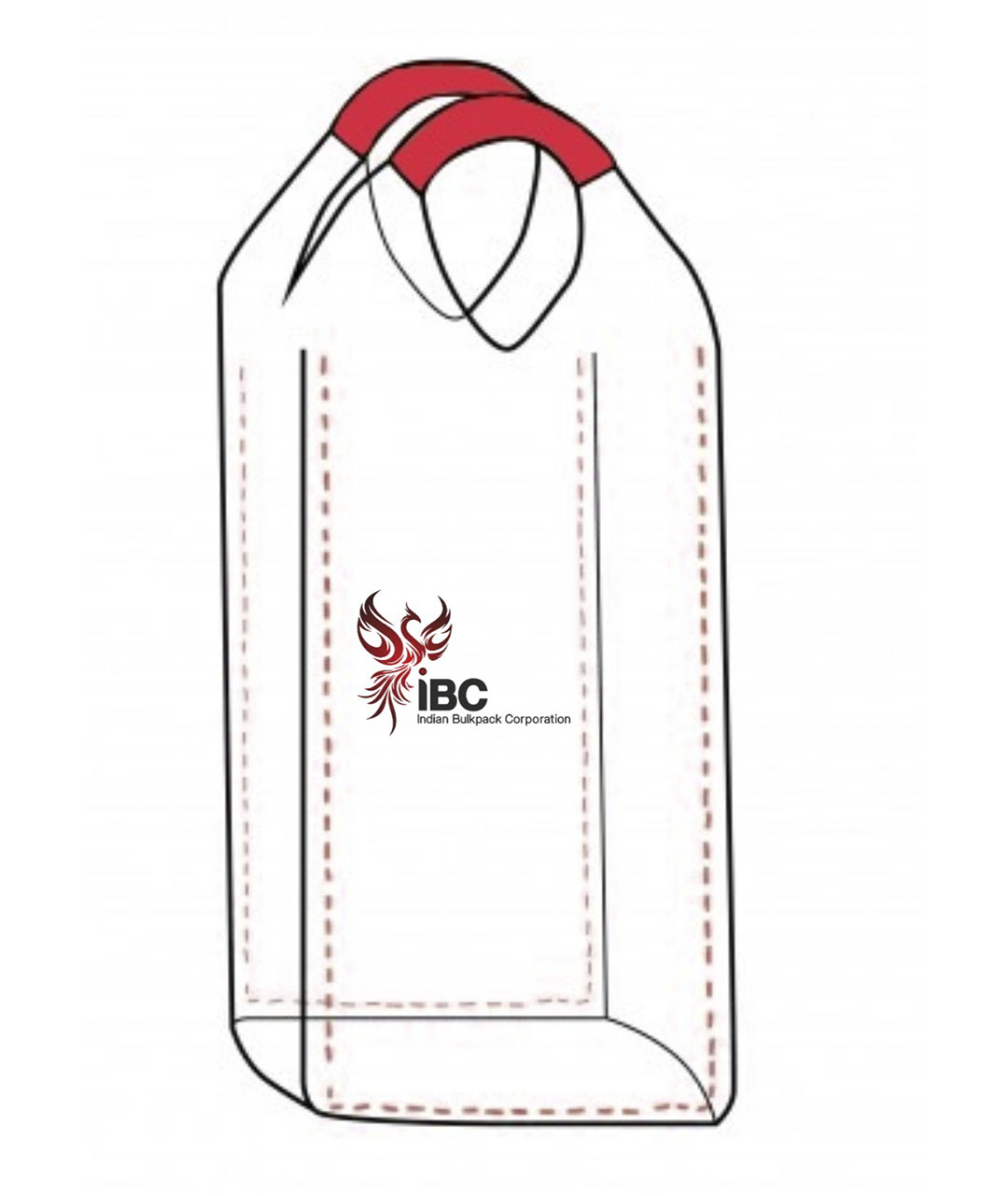
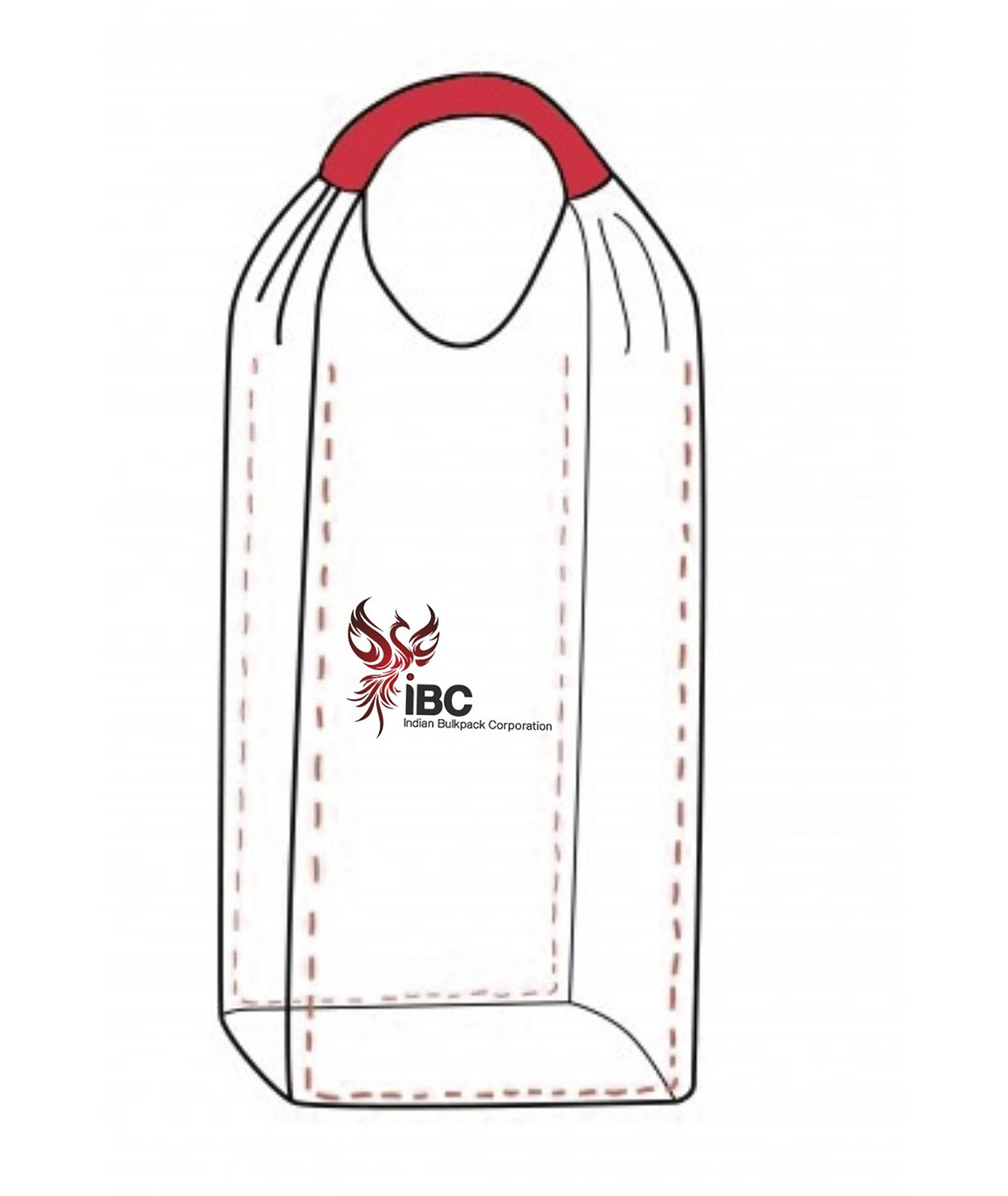
8. ROD Bottom bag
ROD going by the name represents “remote opening discharge”
These are the bags which discharge the material from the bags completely with the help of pull ties.
These pull ties are with different colours, which enables the operators to identify which colour is for outer closure & which one if for the spout.
This option of FIBC is designed for human safety, which eliminates the risk of the operator coming under the bag and pulling ties of the spouts while discharging.
The ties are long enough which can be handled from distance without coming under the bags and it allows quick discharge as well.
9. Garden waste bag
Garden waste bags are PP woven bags smaller in size with holes to allow breathability. Mostly used to collect, segregate and waste management.
Small sized with coloured fabric mostly and heavy UV stabilisation to ensure sustainability over a longer time period.
10. UN bag
UN FIBC bags are FIBC used to carry hazardous material as defined by the UN.
These are guided by International Norms and designed under 3 different packing groups.
Based on the packing group, the bags are tested under different safety and quality parameters. The groups are X, Y & Z and other parameters are height of topple tests, drop test, RIG test, stacking, coated fabric, uncoated fabric, liner, without liner etc.
At IBC, we get our UN certified bags made per the requirement and get them certified from IIP.
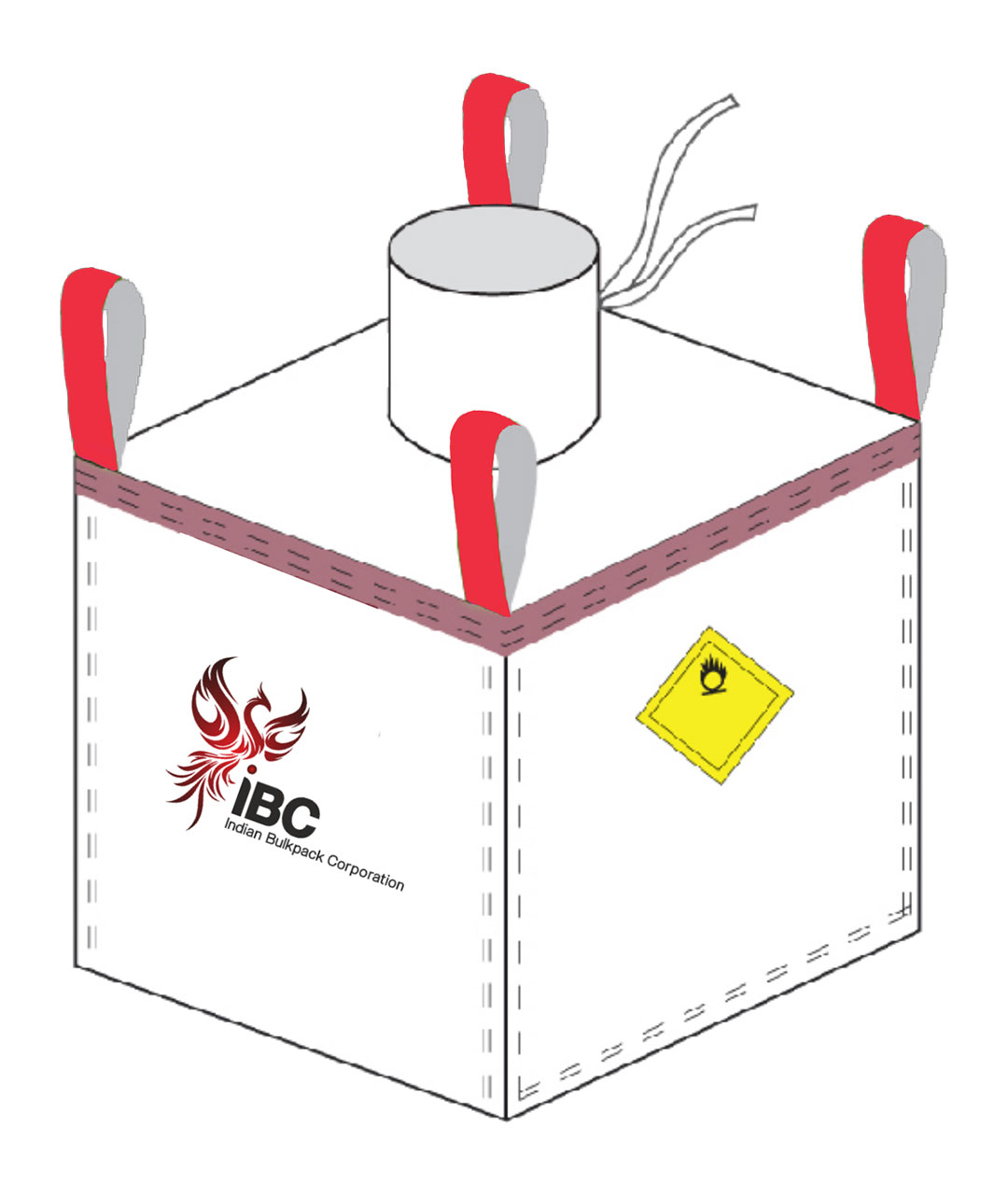
11. Bale cover
Bale Cover as the word suggests are PP woven covers made to cover bales, machines, certain areas from contamination.
These are made in different colours for easy identification as well. These come in coated & non-coated options to allow the material to protect from water, dust & other contamination.
Nothing on the technical side, but comes in various sizes as per the utility.
12. Box bag
Box Bags are basically bags used to protect the goods in transit.
As the word suggests, they are just covers made of PP in the form of Bags, sheets, wraps to protect the goods in transit or while storing them.
These can be un-laminated for protection, laminated for protection + moisture proofing, UV stabilized etc.
Can be printed , as well as in colored fabric, which may be used for branding purposes



